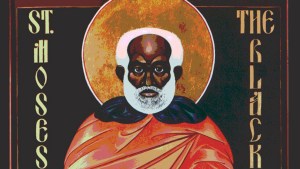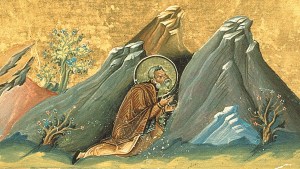The gyrovagi were monks, in early Christian monasticism, who wandered from one monastery to another, instead of residing permanently in a single community. This lifestyle was regarded as unconventional and discouraged by established monastic orders – although it also produced some notable saints. The term “gyrovagus” derives from Latin words meaning “wandering” (vagus) and “circle” (gyro) – basically, monks who were “wandering around.”
In a way, gyrovagi precede mendicant monks. One way to understand the relationship between gyrovagi and mendicant friars is that the mendicant friars were a later development within the monastic tradition that shared certain characteristics with the gyrovagi. Mendicant friars, such as the Franciscans and Dominicans, were also known for their itinerant lifestyle, where they traveled from place to place, relying on the charity of others for their material needs. However, there were significant differences between the two groups.
On the one hand, mendicant friars were part of organized religious orders and followed a specific rule of life. They were focused on preaching, teaching, and engaging in acts of charity and were subject to the authority of their order’s superiors. While they lived a (somewhat) wandering existence, they did so within the framework and structure of their respective religious orders.
On the other hand, gyrovagi lacked such organizational ties and often wandered independently without a clear rule – or even accountability. They were seen as more self-centered and lacking the discipline and stability found in established monastic communities.
But that doesn’t mean that there were no gyrovagi saints. In fact, several saints from the early centuries of Christianity are considered to have followed the gyrovagus lifestyle.
Take, for example, St. Moses the Black – also known as Abba Moses. He was an Ethiopian monk in the 4th century who led a life of crime before his conversion. After becoming a monk, he wandered in the desert as a gyrovagus for many years, seeking spiritual growth and guidance. Despite his wandering tendencies, he embraced the ideals of stability, obedience, and communal living. In a way, Blessed Charles de Foucauld could also be considered a contemporary gyrovagus.
It is important to note that while some saints may have started as gyrovagi, they often underwent a conversion or joined established monastic communities, recognizing the need for stability and accountability in their spiritual journey.



